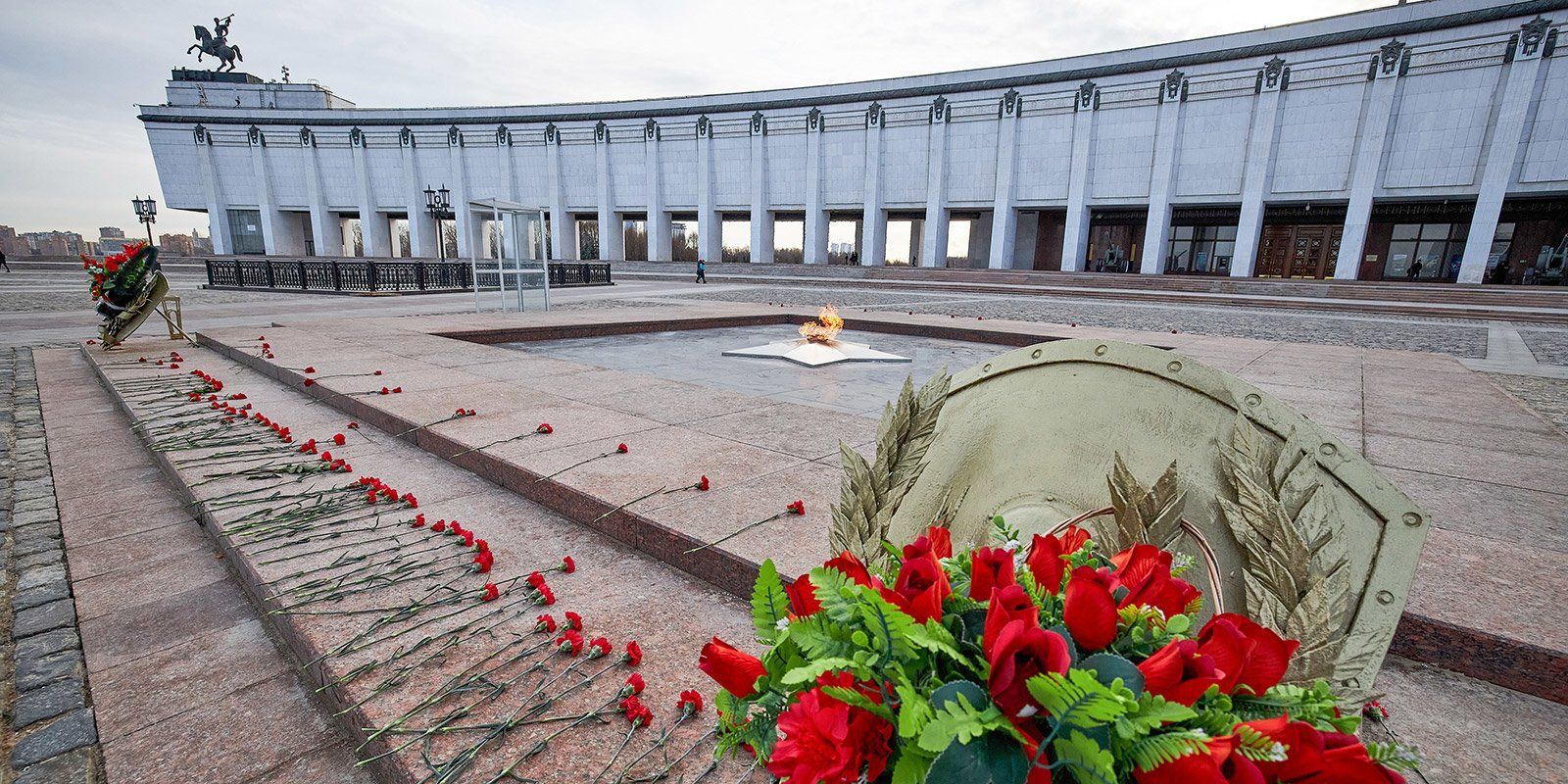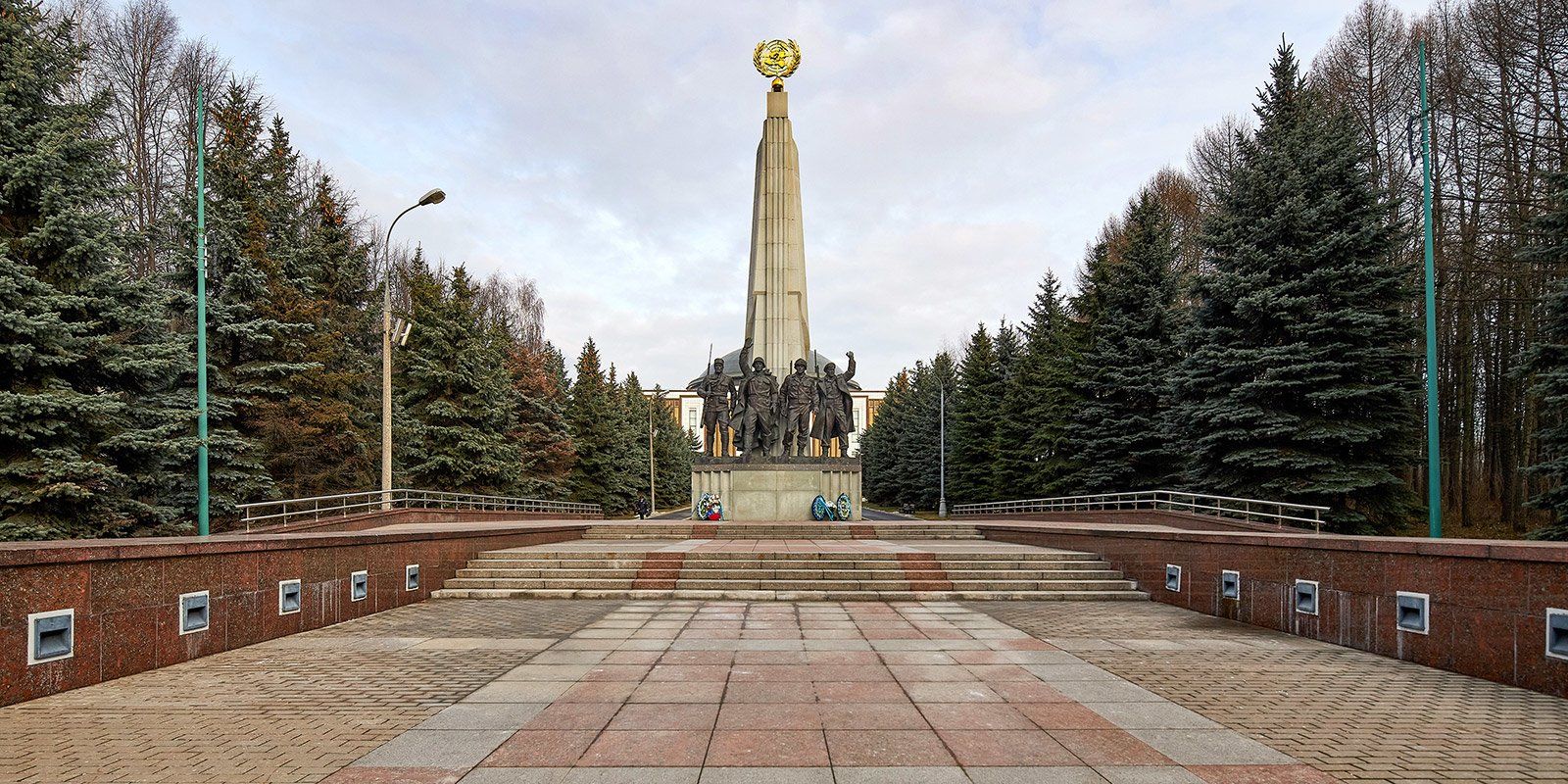High in the clouds: the tallest monument in Moscow
(11).jpg)
Park Pobedy on Poklonnaya Gora has many other mysteries apart from those related to the history behind it. mos.ru readers already know about the underground maze built for the Wartime fountain maintenance. But Poklonnaya Gora keeps more secrets, for example, inside the main monument of the Park — the Victory monument.
Although Park Pobedy was open to commemorate the victory of the Soviet people in the Great Patriotic War, these places keep the memory of other feats, too. For example, the monument to Defenders of the Russian Land in the north-western part of the Park features figures of three soldiers: an old Russian legendary hero, a guardsman who participated in the war of 1812, and a Soviet soldier.
The Victory monument is certainly the architectural highlight and the heart of Poklonnaya Gora. This is the highest monument in Russia. It is 141.8 m high, with every 10 cm of the obelisk meaning one day of the Great Patriotic War.
Fifty years of waiting
The monument to Red Army soldiers who fought on the front lines of the Great Patriotic War was to be mounted on Poklonnaya Gora as early as 1942. However, a contest for the best monument sketch launched by the Union of Architects of the USSR was suspended, as it was difficult to implement such a big project in the wartime.
The idea was revisited in 1955, when Marshal Zhukov sent a letter to the Central Committee of the CPSU, in which he highlighted the need for a majestic monument to commemorate the Victory. In May 1957, the Central Committee of the CPSU adopted the relevant resolution. On 23 February 1958, a granite sign was installed on the site chosen for the stele acquired, reading: 'This is the place where the monument to the victory of the Soviet people in the Great Patriotic War of 1941–1945 will be erected'.
In 1961, a park was laid out on Poklonnaya Gora. In the 1980s, the government announced a fundraising to build a memorial complex in order to render the upcoming construction some special social significance. Building landmarks with people's money wasn’t new: the Russian Empire government raised money to build Borodino Field monuments for the centenary of the Patriotic War of 1812.
Construction of the memorial complex launched in 1985. By that time, Soviet citizens had collected 194 million roubles. Builders started with the Central Museum of the Great Patriotic War of 1941–1945. Established on 4 March 1986, it was expected to open in 1989. But due to the demise of the USSR in 1991, the construction was mothballed.
By the 50th anniversary of the Victory, it was resumed. In 1994, the construction was rapidly nearing the end. The Victory Museum and monument opened on 9 May 1995. On that day, the military parade for the first time took place both on Red Square and on Poklonnaya Gora.
.jpg)
Beauty requires... care
The Victory monument in front of the entrance to the Museum is easily recognizable: the equestrian statue of George the Victorious, bas-reliefs dedicated to the Operation Bagration, the battles of Stalingrad and Kursk, gilded names of the hero cities. But the most attractive part is the stele, shaped as a bayonet of a Russian rifle of 1898. The obelisk weighing 1,000 tons features a steel trihedron. It is an unusual and difficult shape to make this high stele. Designers put the structure model in a wind tunnel to estimate the load accurately.
To partially neutralise the wind load, there is a system of dynamic vibration dampers mounted on the stele. Dampers cope with gusts at 110 –113 m height. Structure's inertia mass of 10 tons oscillates in tower's opposite phase, not allowing it to swing too much. This damper and two other similar structures deal with oscillation of the first mode. Another 15 structures help prevent oscillation of the second mode featuring small amplitude, but high frequency.
Decorative elements made it even more difficult for the designers. The stele has a 25 t bronze statue of the goddess of victory Nike at a height of 104 m. She holds a wreath, with two angels trumpeting about the exploits of Soviet soldiers on both sides. According to Salkarbek Shamkanov, the statue hampered estimation of the coefficient of wind load on the structure. But engineers came up with an idea how it can help: a torsion damper was installed inside the sculpture group, with the main damper of flexural vibration set up behind Nike's shoulders.
.jpg)
.jpg)
.jpg)
.jpg)
.jpg)
.jpg)
.jpg)
.jpg)
The stele's oscillation amplitude is monitored 24/7 by a monitoring centre equipped in special rooms under the monument. The Centre's engineering and production team works in four duty shifts, with two engineers on duty.
System monitors show oscillation indicators, as well as structure's visualisation and meteorological data, including wind speed, its direction, air temperature, as the oscillation amplitude also depends on it, so it is important to consider even the fact which side of the obelisk is illuminated by the sun. Other monitors display images from ССТV cameras that allow viewing details of the monument, including the sculpture group.
Monitoring the structure online is not the only job stele keepers do. They regularly inspect the structures: in a lift, they get to the platforms installed every 12 m inside the obelisk, and check the condition of metal structures. However, the lift cannot get to the top, so engineers reach several upper platforms by vertical ladders with special safety gear.
Memory signs
Majestic Victory monument is a kind of milepost zero of Poklonnaya Gora. Standing on the hill, you can plan your further route. Perhaps the most obvious option is to visit the Museum of the Great Patriotic War first.
There are more than 170,000 exhibits in its holdings, including authentic weapons and military machinery, personal belongings of Soviet soldiers and homefront workers, photos, archival documents, fine art pieces dedicated to the Great Patriotic War, numismatics, philately, philocartics, and much more.
.jpg)
In addition to the exhibition halls, visit the Hall of Memory and Sorrow featuring 385 book volumes that store the names of those who died at the frontline. The Hall of Fame and six big dioramas depicting chief military campaigns of the Great Patriotic War are also the exhibition's highlights.
Honour the memory of the fallen soldiers at the Eternal Flame burning in front of the Museum. It was lit not so long ago, on 30 April 2010, from the Eternal Flame of the Tomb of the Unknown Soldier in Alexander Garden.

There is water a few dozen steps away from fire, also a symbol of the Soviet people’s hardships during the terrible years. It is Wartime fountain, one of the grandest fountains popular with Muscovites.
On the same axis, but on the other side of the building, you will find a monument to the countries participating in the anti-Hitler coalition, a white-marble stele with a gilded wreath — the UN emblem — on top. Set up at the pedestal near the obelisk, there are bronze figures of soldiers of the USSR, Great Britain, France and the United States, made after archival military photos.

Three memorial liturgical buildings constructed right after the opening of the complex remind that not only citizens of different countries contributed to the overall victory over fascism, but also representatives of different religious confessions. These are the Church of St. George the Victorious, a Memorial Mosque built to commemorate Muslim soldiers who died on the fronts of the Great Patriotic War, and a Memorial Synagogue.